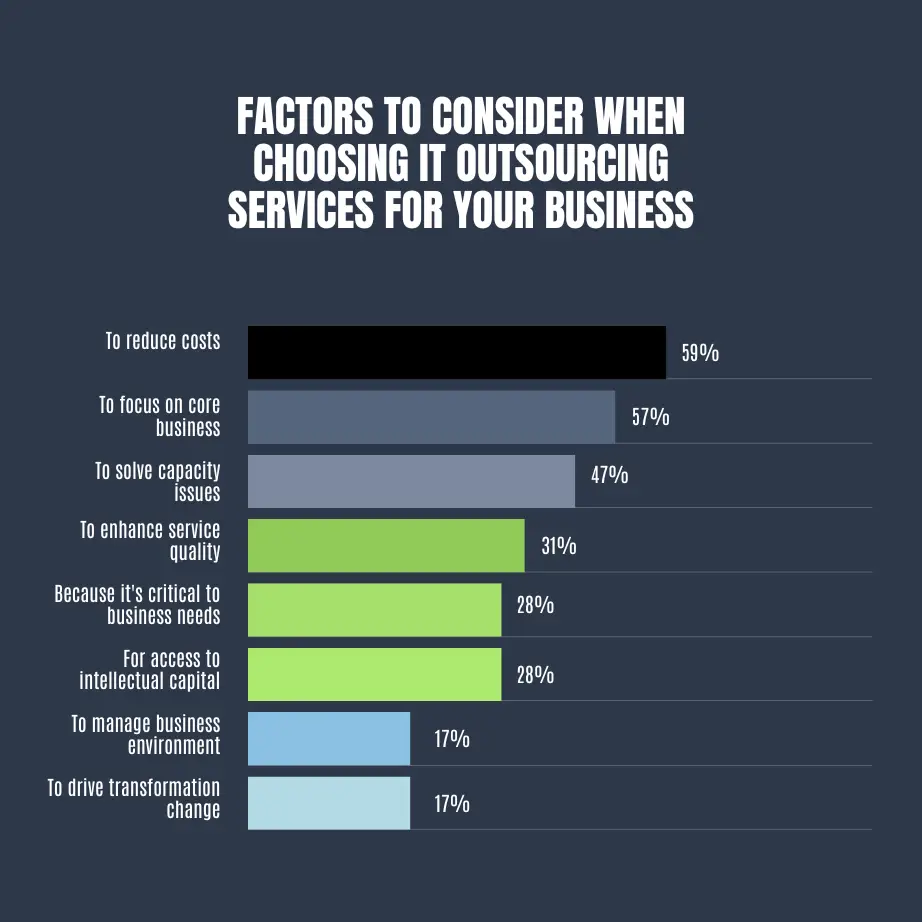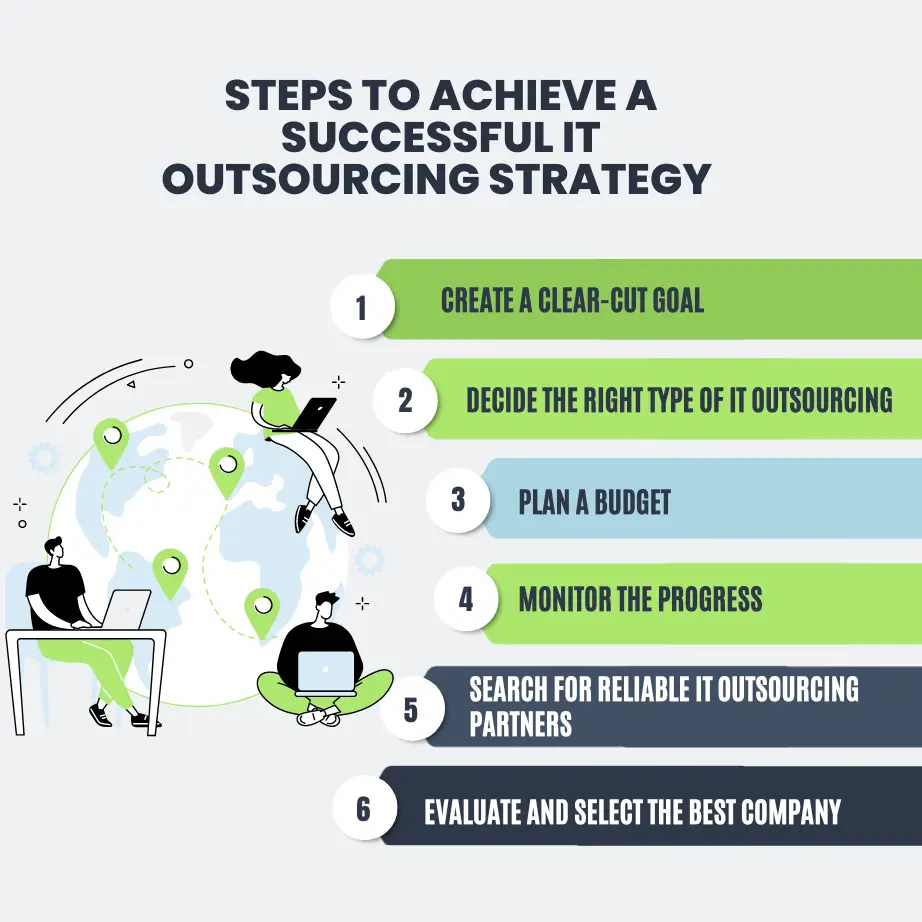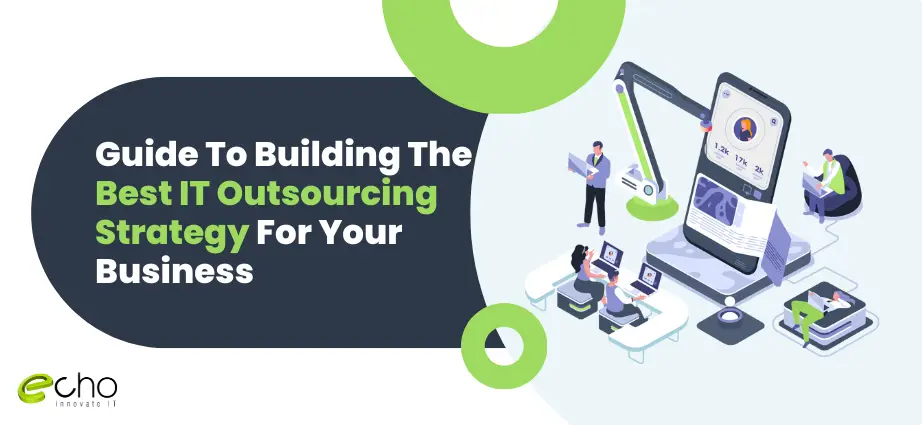In today’s competitive market, businesses must seek cost-friendly solutions, boost productivity, and stay ahead with the latest trends and technologies. Several large-scale organizations employ IT outsourcing to cut costs, shorten time to market, and use external expertise and assets. IT outsourcing uses external service providers to deliver IT-enabled business processes, application services, and infrastructure solutions that improve business outcomes.
It provides significant benefits like improved scalability, empowering businesses, providing support, optimizing everyday tasks, etc. What are the current corporate challenges, and how can IT outsourcing strategies help? Nowadays, companies experience upheavals quite frequently due to new emerging strategies and upcoming trends. Industries must embrace digital solutions and outsourcing to meet such obstacles and remain competitive in today’s economy.

There are several benefits of considering IT outsourcing services. The graph presented by Deloitte shows why most companies are shifting to outsourcing nowadays. Check some of the critical benefits of choosing IT sourcing for expanding business:
Reduced Prices
This is a significant benefit for many businesses. Outsourcing providers frequently offer economies of scale and knowledge, allowing them to provide services at a lower cost than retaining an in-house IT workforce, particularly for specialized activities.
Having Access To Expertise
Your organization may need more in-house talent to meet specific IT needs. Outsourcing enables you to access a global pool of competent individuals for specialized jobs, ensuring you have the most up-to-date knowledge and expertise.
Improved Efficiency
You can free up your internal team’s time and resources by intelligently outsourcing repetitive or non-critical IT operations. This enables them to concentrate on more strategic IT activities directly supporting your primary business objectives.
Improved Scalability
Outsourcing enables you to scale your IT resources up or down as your company requirements change. This provides more flexibility and agility than having a fixed-size internal IT team.
Increased Security
Many IT outsourcing firms specialize in cybersecurity and provide software testing services that may be beyond the capability of an in-house IT team.
Having Access To Innovation
Outsourcing companies frequently stay at the forefront of technology breakthroughs. Partnering with the right offshore development company might provide you access to cutting-edge technologies and unique solutions for your business.
Reduced Downtime
Many outsourced IT companies provide 24-hour support, which can help reduce downtime and ensure that your business operations function efficiently.
What Are IT Outsourcing Strategies And How Businesses Can Utilize Them?
IT outsourcing strategies entail identifying, evaluating, analyzing, and planning outsourced IT operations and projects. These projects could include software development, cloud migrations, IT infrastructure restructuring, web development, cybersecurity, data migration, or app maintenance.
The choice to outsource these operations is frequently prompted by time constraints on one-time initiatives, the intricacy of specific jobs, a lack of competent in-house labour, an overcrowded company, or the requirement for expensive technologies unavailable on-site.
Using on-demand IT outsourcing solutions can boost the success of these strategic outsourcing operations. This can help companies develop a reliable and well-planned IT outsourcing strategy to ensure a sound budget, better choice of engagement models, and access to skilled and experienced resources.
Website development, app development, app and QA testing, technical/customer support, and UI/UX design are among the most popular IT outsourcing services.

Create a Clear-cut Goal
Setting your goals and expectations is the first and most crucial step in developing an IT outsourcing strategy. Please be very explicit about your business requirements, the type of software needed, the challenges it must solve for your firm, and the completion schedule. This goal description should be data-driven, process-oriented, and compiled into a single document to serve as a user guide.
Decide the Right Type of IT Outsourcing
To develop the optimal outsourcing strategy, carefully consider which IT operations will be kept in-house and which can be outsourced. Businesses can employ various tactics to outsource their IT needs, including professional outsourcing, comprehensive outsourcing, multi-sourcing, manufacturer outsourcing, and process-specific outsourcing.
Also Check:
Plan a Budget
Budget is essential, so you must establish a project budget and payment terms. As a business, you must select whether to compensate the party based on production, time worked, or per-project basis. Ensure you choose a payment schedule, kind, and beneficiary contact information.
Search for Reliable IT Outsourcing Partners
Next, look for possible partners who offer IT outsourcing services. You can accomplish this by conducting online searches, attending technological conferences, and seeking referrals from other firms in your field. When choosing an outsourcing partner, you should evaluate the following factors: experience and knowledge, clear and compelling communication skills, a reasonable cost, security, and appropriate work ethics.
Evaluate and Select the Best Company
Once you’ve discovered possible IT outsourcing partners, the following step is to assess them thoroughly. You can accomplish this by requesting references, analyzing their portfolio, and conducting an interview with their team. During the review process, you can assess service quality, team expertise, project management style, scalability, and other factors.
Monitor the Progress
After researching and selecting your selected IT outsourcing partner, manage your outsourcing relationship by maintaining frequent communication, managing projects efficiently, quality control, fixing corporate problems, and getting feedback and reviews from staff to track their changes.
Conclusion
The best IT outsourcing strategy can help businesses make high profits, get cost-friendly solutions, and better manage technology. By following the above steps, entrepreneurs and startups can get better clarity in choosing the right IT team and expert services for their organization. However, finding a trustworthy and reliable company can take time and effort.
Worried? Contact Echoinnovate IT, an outstanding custom app development and IT outsourcing company, and get the best results for your upcoming projects.
FAQs-Guide To Building The Best IT Outsourcing Strategy For Your Business
What is IT outsourcing?
IT outsourcing involves contracting external organizations to handle IT functions such as software development, infrastructure management, and technical support, allowing businesses to focus on core activities while benefiting from specialized expertise.
What are the key benefits of IT outsourcing?
Key benefits include cost savings, access to specialized skills and technologies, increased efficiency, and the ability to scale operations quickly to meet changing business demands.
How do I choose the right IT outsourcing partner?
To choose the right IT outsourcing partner, evaluate their expertise, track record, security measures, cultural compatibility, and communication practices. It’s also crucial to check references and conduct thorough due diligence.
What are the common challenges in IT outsourcing and how can they be mitigated?
Common challenges include communication barriers, quality control, and data security risks. These can be mitigated by establishing clear contracts, maintaining regular communication, setting performance metrics, and ensuring robust data protection protocols are in place.



